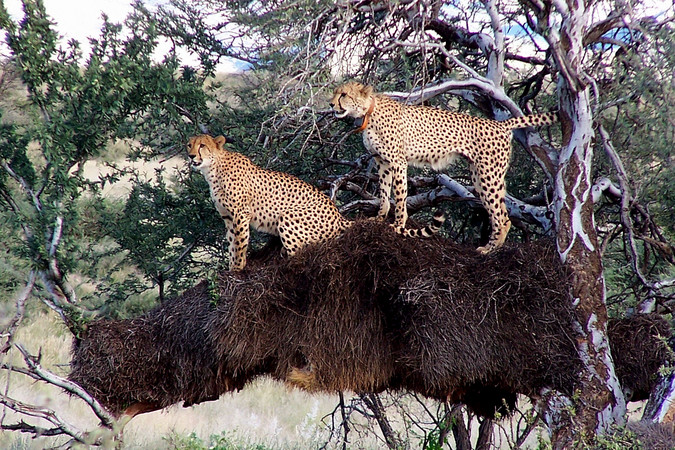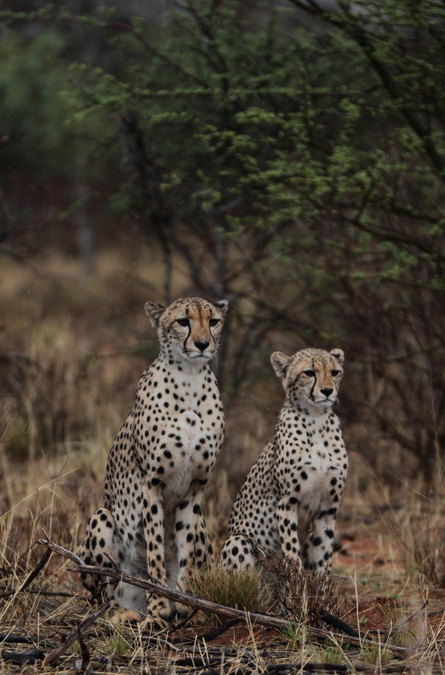Cheetahs: populations, threats and conservation
Posted on 27 March 2019 by Tswalu Kalahari Private Game Reserve in Animal Encounters, Conservation, Destinations, Kalahari, Research, South Africa, Wildlife
 Written and photos by Dylan Smith, head of Dedeben Research Centre, Tswalu Foundation
A cheetah and its cubs lying on a termite mound is a classic sight in Africa, as many safari goers and conservationists will attest to
Written and photos by Dylan Smith, head of Dedeben Research Centre, Tswalu Foundation
A cheetah and its cubs lying on a termite mound is a classic sight in Africa, as many safari goers and conservationists will attest to. There is, however, a side to the tale of the cheetah that many are not aware of when as they gaze in wonder at and photograph these remarkable cats.
Sources differ slightly, but it’s generally accepted that cheetah numbers have plummeted from around the 100,000 mark at the turn of the 19th century to between 6,000 and 7,000 and that cheetahs occupy only about 9% of their historical range. As a result, they are currently listed as “Vulnerable” by the IUCN.
The majority of the remaining wild cheetah (70-80%) are found outside of formally protected areas, which means that the threat to their survival could continue unabated unless attention is focused on their conservation outside of reserves.

Generally, cheetah do well within conservation areas, particularly where there is little or no competition from other large predators and plenty of prey items. Often these reserves are able to relocate excess cheetah to areas where the species have been eradicated (assuming that the risks have been mitigated within these areas).
The challenge then remains to address the threats facing cheetah populations outside of reserves across their range. Among these are a reduction in prey populations, conflict with farmers over stock losses, deliberate or inadvertent snaring, and illegal wildlife trafficking and bush encroachment.
Tswalu Kalahari Reserve is fortunate to have a healthy and thriving population of these predators – the wide-open spaces, adequate protection and prolific herbivore populations have enabled cheetah to increase in number.
Cheetah have always been a great drawcard for guests and we hope they will continue to be so for many years to come.
About Tswalu Kalahari Private Game Reserve
The uniqueness of the safari experience at Tswalu is in the beauty of the 120,000 hectare southern Kalahari wilderness, restored to its original state as a result of an ongoing conservation programme. A variety of interactive safari experiences are offered to explore the malaria-free reserve with its wide open spaces, rolling savannah landscapes and Korranaberg mountains, and guests view the game on foot, on horseback or in 4x4 game viewing vehicles. Expect sightings of some of Africa’s rarest and most extraordinary wildlife, including black-maned lions, African wild dogs and pangolin.

